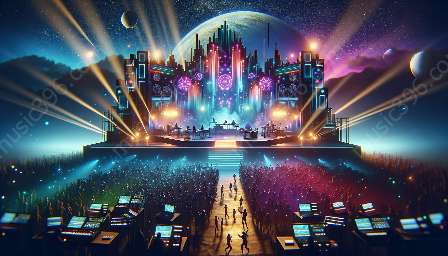Electronic music has long been a breeding ground for innovative and experimental techniques, pushing the boundaries of sound creation. One such approach that has gained popularity is the incorporation of field recordings in compositions. This unique method allows musicians to blend the natural world with electronic elements, creating rich and authentic soundscapes that engage the listener on a profound level.
In this extensive guide, we will delve into the intricacies of incorporating field recordings in the composition of electronic music, exploring how these natural sounds can be manipulated, processed, and integrated into the electronic music production workflow. We will also examine how experimental techniques can be used to elevate the use of field recordings, resulting in compositions that are both captivating and unique.
Understanding Field Recordings
At its core, a field recording captures sound from the world around us, whether it's the rustling of leaves in a forest, the ebb and flow of ocean waves, or the bustling sounds of urban environments. Musicians and sound artists have long been drawn to the authenticity and rawness of field recordings, recognizing their ability to convey a sense of time, space, and emotion that is often challenging to replicate using electronic instruments alone.
Field recordings can be made using a variety of equipment, from portable recorders to high-quality microphones, allowing for a wide range of sonic possibilities. Once recorded, these sounds can be manipulated and processed in numerous ways to fit seamlessly into an electronic music composition, providing a unique sonic character that sets the music apart.
Exploring the Synergy with Electronic Music
With the rise of electronic music, the synergy between field recordings and electronic elements has become increasingly prevalent. By incorporating natural sounds into electronic compositions, musicians can bridge the gap between the organic and synthetic, blurring the lines between the two domains and creating music that is deeply immersive and evocative.
Many electronic music producers and composers have embraced the use of field recordings as a means of infusing their music with a sense of realism and connection to the natural world. Whether it's the inclusion of bird songs, rain showers, or abstract environmental sounds, field recordings provide a sonic palette that adds depth and authenticity to electronic compositions.
Manipulating Field Recordings
Once field recordings are captured, the possibilities for manipulation and transformation are virtually endless. Experimental techniques in electronic music production allow for the reshaping and recontextualization of these natural sounds, opening up a world of creative potential.
From granular synthesis to spectral processing, electronic musicians can use a range of cutting-edge tools and software to deconstruct and manipulate field recordings, transforming them into ethereal textures, rhythmic elements, or atmospheric layers. By harnessing these experimental techniques, composers can push the boundaries of traditional sound design, unlocking a wealth of sonic possibilities that transcend conventional musical norms.
Blending Natural and Electronic Elements
The seamless integration of field recordings with electronic elements forms the cornerstone of creating compelling compositions. By carefully blending these disparate sonic components, musicians can craft rich, multi-dimensional sonic landscapes that resonate with listeners on a profound level.
It's essential to consider the sonic cohesion and balance between the natural and electronic elements within a composition. By employing creative spatialization, processing, and layering techniques, artists can ensure that field recordings seamlessly intertwine with electronic instrumentation, resulting in music that is both captivating and cohesive.
Creating Authentic and Unique Soundscapes
Field recordings offer a means of infusing compositions with a sense of authenticity and individuality, allowing musicians to tap into a vast reservoir of sonic inspiration. By incorporating these natural sounds into their compositions, artists can create truly unique sonic experiences that transport listeners to immersive and evocative sonic realms.
Experimental techniques in electronic music provide the toolkit for artists to push the boundaries of sonic exploration, enabling them to craft compositions that defy traditional conventions and expectations. Through the skillful integration of field recordings and electronic elements, musicians can forge soundscapes that are not only authentic but also resonate with emotional depth and artistic integrity.
Conclusion
Incorporating field recordings in electronic music compositions offers a wealth of creative opportunities for musicians and composers. By leveraging experimental techniques and embracing the synergy between natural and electronic elements, artists can craft compositions that transcend conventional norms and resonate with listeners on a profound level. The fusion of field recordings and electronic music not only enriches sonic palettes but also opens up new realms of creativity and artistic expression, fostering a deeper connection between the music and its audience.


